Key Takeaways
This article will walk you through the different ways you can do SEO for a B2B SaaS. The goal of this article is to help you better understand what you should be focusing on and what the overall goal of SEO is, especially for SaaS companies.
SEO is changing for SaaS.
What used to work in 2024 doesn’t work in 2025.
But does that mean SEO is dying?
Nope.
It’s just evolving.
While blue links still matter, we now have to consider multi-modal search.
Meaning:
- Meeting customers where they are when they use LLMs
- Being featured on Reddit threads that also rank on the SERPs
- Including video in your strategy to also capture out on video search (YouTube is the second largest search engine after Google)
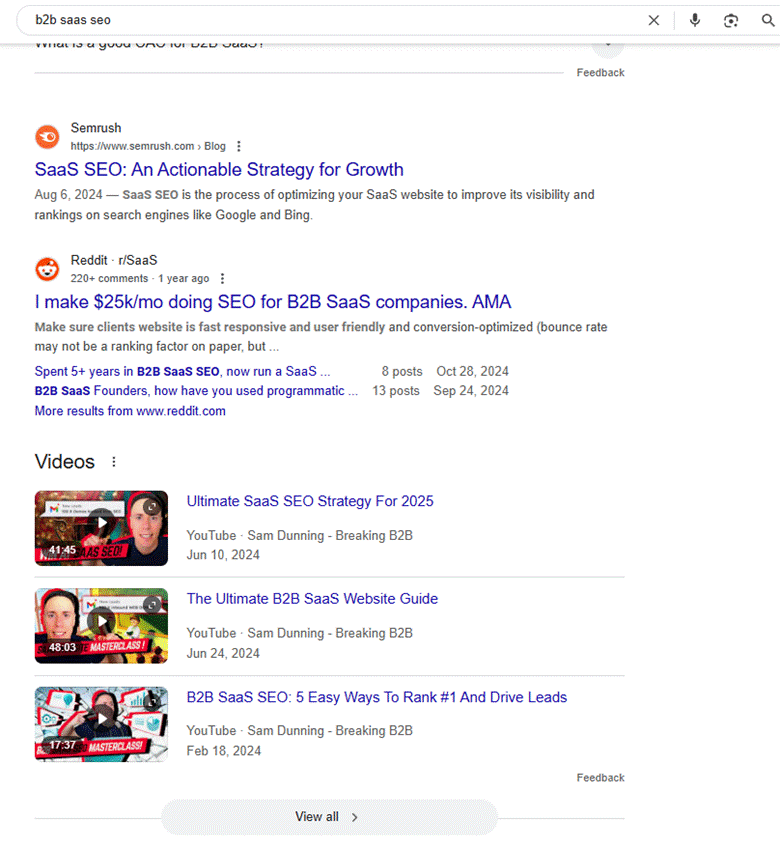
With all this going on, how should SaaS companies restructure their approach to SEO?
Should they pause their SEO budget? Find a new channel? Or double down on SEO?
With all the algorithm changes over the last year, I’ll outline the exact strategy that helps my clients dominate all kinds of search.
This is a full guide to everything I know about SEO in 2025.
Let’s jump in.
The Pre-SEO Checklist for SaaS
#1. Lay Out Your Goals for 2025 and What You Actually Want to Achieve With SEO
“Why are you doing SEO?”
“What are you trying to achieve here?”
It’s something I ask my prospects during the initial discovery phase.
Are you trying to:
- Increase revenue from organic and lower your acquisition cost?
- Build more top-of-mind awareness with your ICP?
- Increase traffic and rankings?
- Match what your competitors are doing?
You shouldn’t start SEO if your answer matches the last two.
Those aren’t aligned goals.
It just ensures your strategy starts with vanity.
It’s doomed from the start.
I’m putting this in all caps so you listen:
MORE TRAFFIC DOES NOT ALWAYS MEAN MORE CONVERSIONS.
Let’s try that again:
MORE TRAFFIC DOES NOT ALWAYS MEAN MORE CONVERSIONS.
Instead, your goals should initially be tied to an overall outcome.
Your goals will decide everything else that you do, so if SEO is a priority, you have to focus on a goal that’s worth the effort and can be attributed to revenue.
This means focusing on metrics like:
- Increasing organic revenue by x%
- Growing organic demos by x% by y.
- Increasing traffic by x% to our BoFu-style articles
With the last outcome, the focus isn’t on overall traffic.
It’s qualified traffic.
Traffic that can convert.
So before you do anything, map out your specific SEO goals.
Really nail down your “why.”
It shouldn’t be because you think you should be doing SEO.
There should be a specific business opportunity or goal you want to achieve with SEO.
Everything else, from your strategy to your tactics, will all fall under these goals.
#2: Put Together Your SEO Strategy and Roadmap
Once you have your goals outlined, it’s easier to develop your SEO strategy.
It’s the very foundation for everything you do.
And of course, most brands neglect it.
Even from a small poll I ran, most respondents felt like their SEO strategy was pretty aimless.

They’re just running on autopilot.
I see it all the time throughout the industry.
Brands are more obsessed with output and not the “why” behind that output.
“Why are we doing what we’re doing?”
“Why are we creating 5 articles per month? What is this working towards?”
Sites over-prioritize output/checkbox marketing and don’t attach a “why” to anything they do.
In most cases, they use an outdated, output-focused checklist/SOP to guide their SEO.
They think checking off boxes will magically fix their SEO without really knowing what that effort is impacting.
Instead, they end up wasting time with aimless SEO tasks that don’t produce results.
And SEO takes all the blame.
So, to get away from checkbox marketing, you have to start with an overarching strategy for your SEO.
Your strategy will draw heavily on the goals you outlined before.
This includes:
- Understanding your competitive industry: Who are your direct competitors, and who are your search competitors? Who are you going up against, and how difficult will it be to differentiate yourselves from them?
- Adapting your goals to your business size: Are these goals actually realistic based on the resources you have available?
- Understanding how your audience searches: Is there a genuine opportunity to target your ICP here? Are they active on search when considering different SaaS solutions? Or are they mostly relying on referrals and word of mouth from their network?
An example of this would be, “We’re going to increase organic revenue by x% [Goal] by targeting CFOs who are in the market for our solution [Strategy].”
Your goal is the main KPI, and the strategy is the high-level “how.”
This high-level “how” should work towards validating your goal.
It needs to prove that there is a realistic way to reach your main identified goal.
And show there’s an opportunity for your product within this market.
This could be:
- How SEO will fit into your audience’s buyers’ journey
- If SEO is a viable channel for capturing ICP traffic
- Whether SEO is even possible for your product
After you have your goals and strategy mapped out, you’ll start building out your full SEO roadmap.
Which are the tactics that complement your strategy.
But, before we get there, there are a few things you need to know when planning your SEO strategy.
Have An Idea of Your Ideal Target Audience and Persona
The first part of any SEO strategy starts with the “who.”
The searcher.
You have to have some framework of:
- Who you’re targeting: Are they decision-makers like CMOs, marketing directors, or founders? Or are they mid-level marketers or individual contributors?
- Why you’re targeting them: What specific pain points are they trying to solve? Is there an opportunity to position your product as a solution for them?
- How you expect them to engage with your content: Are they actively searching for a solution or just browsing for information? Do they use search to inform their purchasing decisions?
You even need to know the finer details like:
- What their day-to-day looks like
- Who they report to
- What terminology they use to search
- Whether they’re in a position to make a final purchasing decision
For example, let’s say you’re doing SEO for employee retention software.
Your “audience” could be middle management or HR teams who are currently dealing with employee churn.
Even though they’re experiencing the pain point and would likely use this tool, are they in a position to make a final purchasing decision for their organization?
Or would it be a founder or COO?
It’ll vary from organization to organization.
So now, your HR professional can be segmented into two groups.
A decision influencer or a decision maker.
They’re your ICP, but they won’t always be making that final call.
They might raise the issue with the final decision maker (founder), but they aren’t in a position to purchase the product directly.
Because of this, there are two audiences and search behaviors you now have to identify:
- The Final Decision Maker: Since this could be someone outside the field of HR, you have to predict what their search might look like. Let’s say it’s the founder. This founder may have an entirely different outlook on the situation compared to the HR professional. They may even overlook the friction causing their employees to be unsatisfied and care more about the resulting poor employee productivity.
- The Decision Influencer: The HR professional in this case. They might have a better understanding of the reason behind the employee’s friction, but all they can do is attempt to educate the decision maker on the actual issue. Whether that final decision maker listens is entirely up to them.
For the HR professional, the content that’s helpful for them will support their stance.
Your content has to give them confidence that they’ve correctly identified the issue and that a solution (or yours specifically) is necessary.
With the founder, you have to give them confidence that your product is the best option within that category.
Usually in the form of sales enablement content.
They’re not searching for the issues themselves.
But if the HR professional recommends looking into solutions for that particular issue (and they listen), they’ll research your product and competitors to see who offers the most value.
You can partially influence this final decision by creating sales assets like:
- Competitor comparisons
- Case studies
- Video testimonials
- Interactive demos
- Social proof (brands you’ve worked with, testimonials)
But most of the influence will come from external factors like:
- Reviews
- Word of mouth
- Even conversations on Reddit
So, why does any of this matter?
It’s all a part of customer research.
None of your efforts will matter if you can’t identify the “who” behind your search.
It’s a guessing game at best.
And it completely takes away learning:
- Who you have to influence
- The genuine pain points this audience is experiencing
- How you can make them feel heard
- If SEO will actually be a viable channel if PR around your brand is negative (more on this later)
Your customer research has to be the strongest pillar of your SEO.
You have to understand:
- Who will make that final purchasing decision?
- Who’s our ideal motivator—the person who influences the decision-maker?
- How are both audiences likely going to search when they’re either in-market or almost in-market for your solution?
- What type of content will engage both audiences?
Now, once you have the “who,” we’ll add a few categorizations to our audience to help visualize where they are in their journey.
You’ve seen this before, but some are:
- Problem-Aware: They understand they have a problem and want to fix it
- Problem-Solution-Aware: They know a solution exists for their problem
- Product-Aware: They have their list of product options boiled down and are now making a final decision
Audiences that are product and solution-aware also fit into that bottom-of-funnel category.
Which is when a user is now “in-market” for your type of solution.
This is the audience segment you’ll mainly be marketing to and will want to research most.
The majority of your conversions will come from here.
And keep in mind that likely only 5% of your total available market is actively in-market.
So while traffic will be much lower, these audience segments convert well.
But even beyond understanding search habits, consider:
- What does your audience truly care about?
- How can you make them feel heard with the content they’re reading?
- Does your audience feel like you truly understand their situation?
It all comes back to understanding the why:
- Why should this reader choose my product over the competition?
- Why should they even be using my product in the first place?
Put yourself in the role of the searcher.
What article likely sounds better for an HR professional:
- One that explains exactly why their employees might be feeling unsatisfied (and validates what they might be feeling).
- Or a high-level article that starts off with “What is Employee Satisfaction” and reads like it was created by a 1-sentence AI prompt.
Obviously, the one that speaks directly to your ICP’s situation.
So, to wrap things up, your audience research boils down to:
- Understanding your audience and their concerns
- Putting your audience into relevant segments (decision maker/influencer)
- Tying together the dots between your product’s benefits and the issues your audience is facing
- Knowing how you can make your audience feel heard/validated
Not only does your audience research show you how to capture search demand from people who are actively in the market for your solution.
But it can support demand generation, too.
If you know exactly what your audience wants, you can become a genuine resource for them—as long as your content quality holds up.
And those who feel heard will share that content with others in similar roles and situations.
It’s the exact end goal you want with SEO and inbound marketing:
- Capturing demand from people in-market for your type of solution
- Creating demand through high-quality content and having an audience that acts as advocates for your brand
All of this starts with identifying the “who” behind your audience.
A List of Pain Points Coming From Your Audience
Once you have identified your audience persona, you’ll have to research your ICP’s problems.
These insights will pretty much guide everything you do.
After all, you’re trying to position yourself as a solution to them.
The idea behind identifying pain points is to understand:
- Common trends in those pain points: Is this a common experience your audience is facing? The more data you have access to, the more you’ll be able to decide whether this is a unique scenario or a common issue for your ICP.
- How your audience might go about searching for solutions to that problem: If they do end up searching for solutions, what type of information are they looking for? Are they reading articles? Using LLMs? Watching videos? What’s the point in scaling up content creation if there isn’t any demand for answers?
But most importantly, these pain points help you connect a business relevancy score between your product and content.
Meaning: Is this a pain point your product can solve, and can that be demonstrated through content?
The way I like to think about it is, “Would I be able to walk through the solution to a prospect’s problem over a product demo call?”
If yes, then this is something you can replicate with your content.
And almost every article at the MoFu stage will follow this structure of having a business relevancy score attached to it.
Each article should act as a mini demo and pitch for your product.
Your content has to highlight your product as a potential solution to the searcher.
They are open to considering solutions, so now you have to show them (not tell them) how your product can help them deal with that specific issue.
These pain points aren’t hard to find, either.
My favorite way is to add an option to your contact form that asks “how they plan to use your tool.”

It’s a solid way to build a content roadmap organically, especially since it’s coming directly from your ICP.
But if you want to be more aggressive with audience research (which you should be), you can just message your ICP directly.
I recommend starting with connections you have a warm relationship with.
You can reach out on LinkedIn to ask:
- What is their biggest challenge with [X] right now?
- What would make your life easier for managing [X]?
Most people (especially ones you’ve interacted with before) are open to this, as long as you’re not hitting them with a pitch slap afterwards.
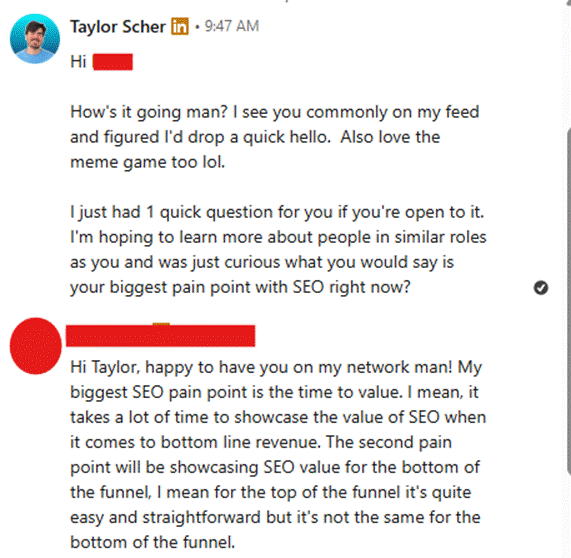
But there’s an additional thing you can ask that will be helpful for all areas of your marketing.
Ask them: If they were in the market for your solution, what concerns would hold them back from making a final decision?
What would hypothetically prevent them from signing up to your product?
Their problems can usually be addressed with content.
But concerns are a whole other barrier you’ll have to deal with.
If you don’t identify these concerns, you won’t be able to address them in your content.
And if you don’t settle their hesitation, your content won’t do much for your conversions.
These concerns could be the result of:
- Your pricing structure: Maybe you’re just too expensive compared to the competition, or there could possibly be some uncertainties around how much your product costs (especially if you don’t display pricing on your website).
- Your brand’s reputation: I’ve seen this happen firsthand. If you screw over your customers, that reputation is going to follow you regardless of the content you create. Remember, key decision makers may use review platforms and Reddit for product research, so you may have external factors pushing people away from you, regardless of whether your product is the right fit or not.
- Missing product features: Your messaging doesn’t properly convey all the features your product has, or it doesn’t have the feature that person needs.
- Competitors: Maybe your differentiation strategy is weak. Why should someone choose your product if there are cheaper and better alternatives?
Whatever it is, make sure you structure your content and messaging in a way that leans on those concerns.
If pricing is a concern, weave social proof and case studies into your content that show it’s worth it.
If missing features are a concern, make sure your product’s messaging is crystal clear on what it can and can’t do, and how they can make the most of its features or compensate for any it lacks.
You can solve pain points with content.
But to see results, you must address your ICP’s concerns at the same time.
Product-Market Fit Comes First
The most destructive part of any SaaS SEO strategy is a loose GTM strategy.
Imagine you’ve invested $10,000s into BoFu content only to have to change it later on due to a new product positioning.
It happens more often than you might think.
If your product is still evolving, really consider whether it’s worth moving forward with SEO.
If you’re confident in the product’s positioning before launch, you can start putting together MoFu content to build some traction.
You can always go back and update those articles once the product is more defined.
But I’d stay away from any BoFu-type articles that are directly tied to your product.
If your messaging and/or product changes, the majority of that content (and the time spent on it) becomes wasted.
This advice is mostly for early-stage startups.
But it’s because of this that I generally recommend startups prioritize other marketing channels instead of SEO.
Reverse Engineer Your Competitor’s SEO Strategy
I don’t recommend copying your competitor’s SEO strategy exactly.
But you should still check what’s working.
I recommend looking at:
- Content topics they’re going after: Are they hammering down on any known pain points with content? Are they taking a product-led approach with each article?
- What keywords they’re bidding on: Are they bidding on just their brand name? Or are there other keywords that might be valuable to you? If they’re bidding on it, there’s a good chance it will be valuable.
- How they’ve structured their BoFu strategy: Are they targeting any “best,” “vs,” and/or “alternative” terms? Are any of them against you?
- How they’ve optimized their site for conversions: How are they using CTAs? What do their case studies look like? Do they have pricing pages? What other sales enablement content do they have built out?
- Where they’re getting links from: Is it from link magnets, PR, guest posts, etc?
As for researching these sites, I usually:
- Look at their site through Ahrefs/SEMrush
- Take a manual look at their site
- Look at review platforms to see what people have to say about them

Don’t copy your competitors exactly; just see what might be working for them.
And what could be worth adding to your own strategy.
Figure Out How You’ll Structure Operations
It’s not talked about often, but bottlenecks and poorly structured operations are the death of most SEO campaigns.
Whether it’s:
- Founders not understanding the role of SEO and deprioritizing it in favor of other growth channels like paid ads or sales outreach
- Giving the bare minimum budget to content creation
- Too many cooks in the kitchen reviewing work, causing a bottleneck at each stage
From the very start, there has to be a clear process in place to execute SEO.
You should have some SOPs or systems built out to handle operations.
Especially if everyone is aligned on SEO being a long-term investment.
You have to have a full vision for operations.
Like:
- Which role is managing each step of the process
- The specific process necessary for each step
- The responsibilities each role should avoid
Your SEO cannot be half-assed due to poor operations.
And you don’t want to burn out your employees or sacrifice quality.
All this will come in the form of a system.
This could include:
- What your content operations will look like: Will it be a smooth flow or are there any potential bottlenecks that can arise?
- Whether you’ll use AI to help scale: Can you use AI workflows to maximize the output of what your team can do?
- If you need access to an SEO stack: Do you have access to SEO tools like Ahrefs, Screaming Frog, and Surfer? How will these tools be used for your SEO efforts?
- How this will involve the entire company: Is your company getting involved as internal SMEs? Are you collaborating with your demo or customer success team? Are your other marketing departments, like social and outbound, getting involved?
Make sure all your operations are mapped out.
Don’t leave anything to chance here.
Have a system built out for your operations.
#3: Do a Full SEO Audit of Your Site
Now, you know “what” you’re trying to achieve.
Next, you’ll put together the tactics that best fit your strategy and goals.
The best way to do this is in the form of an SEO audit.
A full look at your site measured against your overall strategy and goals.
If the strategy is again “increasing revenue by targeting this ICP segment,” the audit will reflect exactly that.
Every tactic recommended should have some impact on that overall strategy.
You’re tying a “what” to the “why.”
An “if-then” statement almost.
If we do “x,” then we expect it to lead to “y.”
In this case, you can’t identify the “x” (tactics) without knowing your overall “y” (strategy).
With an audit, you can learn what’s worth your time and what isn’t.
Meaning what tasks are:
- Low-Leverage/High-Reward: Easy wins with a lot to gain
- Low-Reward/High-Leverage: More work for very little gain
- Somewhere In The Middle: Housekeeping work
You’ll want to start with low leverage.
High leverage, you’ll most likely want to avoid.
I also recommend looking at the site with both a marketing and SEO lens.
You’ll want to look out for things like:
- Technical SEO: Technical SEO can either be a massive issue or no issue at all. In most cases, it’s a one-and-done tactic. But you still need to check whether your pages are indexable and whether there’s an issue with crawling or rendering.
- Content Creation: What are your opportunities, content-wise? What content topics would be best to target first to help you reach your goals? Spoiler: In most cases, it’s going to be your lower-funnel content.
- Content Updates and Quick Wins: What quick wins can you go after? 44% of SaaS marketers said that SEO takes too long to work. But, in most cases, that’s not true. If you have an established site, chances are, there are some easy content opportunities you can go after.
- Conversion Rate Optimization: Conversion rate optimization needs to be considered in SEO–especially for a SaaS. There’s more that goes into the buying process, so you need to influence the buyer’s journey as much as possible while they’re on the website. This could be case studies, CTAs, testimonials, sales enablement content, etc.
- User Experience: Similar to CRO, you don’t want to neglect anything that interferes with your ICP’s buyer’s journey. While user experience CAN influence SEO, it should be focused on the user. It’s called USER experience, after all. But this means seeing if your site is usable on mobile devices, loads fast enough, and overall provides a nice experience to users on your website.
- Link Building: Link building, in most cases, is a priority. However, it depends on your site. Do you have a lot of authority? Are you a newer site? If you’re a newer site, I’d say prioritize link building more than content. If you’re an older site with authority, you don’t have to prioritize it as much.
With all this in mind, you’ll be able to put together an audit that stays true to your overarching strategy.
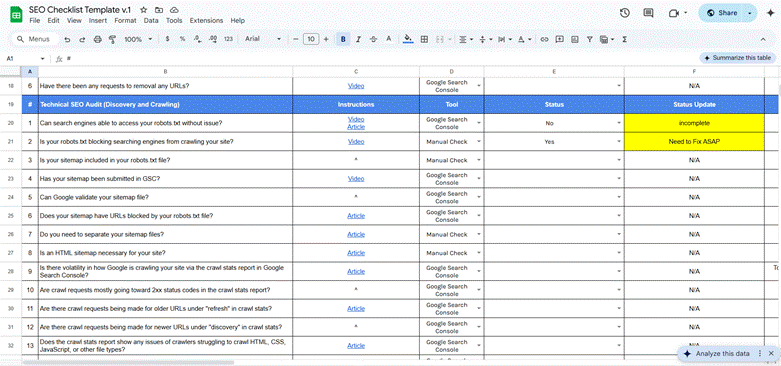
If you don’t know where to start, I have this 200+ checklist that will help guide your audit.
Each item in the checklist will give you an idea of priority, so you know what’s essential and what you can push aside.
I also have a fully built-out Looker Studio dashboard that will help automate this checklist using your GSC data.

Promotions aside, follow this process before starting anything SEO-wise:
- Establish goals
- Build out a strategy
- Conduct an audit to help prioritize tactics
#4: Set KPIs for Traditional SEO and LLM Visibility
Lastly, have KPIs set for your SEO campaign.
This is another reason why identifying goals is the first step.
Your goal (revenue, demos, trials, signups) will be that main KPI from organic.
In most cases, you can ignore vanity KPIs like:
- Traffic Increases
- Bounce rate
- Rankings
- DR/DA
Again, these likely won’t factor into your overall goals.
They’re just vanity metrics when improperly used.
Instead, I’d use these KPIs to somewhat measure your SEO strategy:
- Demos
- Brand/non-branded queries
- Engagement rate
Don’t forget to account for generative AI, too.
Generative engine optimization (GEO), at its core, is still SEO.
SearchGPT even uses Bing’s index for most of its results.
However, with LLM usage growing, you want to measure your reach and visibility.
Especially with clear data being harder and harder to access with privacy regulations like GDPR.

Wil Reynolds of Seer Interactive recommends ditching traditional SEO metrics for metrics that directly reflect overall business performance.
He recommends focusing on:
- SEO traffic vs revenue
- SEO traffic vs leads/lead quality
- Site visitors coming from ChatGPT + engagement rate
Additionally, Maeva Cifuentes from Flying Cat Marketing has a few other KPIs to measure in a zero-click world:
- Search impression share in zero-click features
- Share of voice
- Growth in LLM-branded responses (which there are now a few tools you can use to track visibility on LLMs)
The main takeaway is that your SEO KPIs may come in all different shapes and sizes.
But your main KPI/goal will always stay the same and be the main priority.
These secondary KPIs will allow you to keep progressing and monitor overall performance while not being overly focused on vanity.
The B2B SaaS SEO Playbook for Getting More Leads
#1: CRO Has To Be A Part Of Your Existing Strategy
Did you know my SEO audits don’t even start with SEO?
They start with conversion rate optimization.
I mean, this is an SEO strategy article, but my first recommended tactic is CRO.
This makes sense when you think about it.
The goal for each site can’t just be traffic.
You already identified this when you set your initial goal for SEO.
The goal is revenue.
So, the role of SEO is to reflect that beyond just clicks and rankings.
You want users to take some kind of action while they’re actively on your site.
Whether it’s:
- Signing up for the product directly
- Viewing a pricing page or case studies
- Downloading a resource
- Even just exploring more of your site
The end goal can’t stop with a click.
You want to engage users beyond just reading your content.
But there’s a lot more to CRO than most people think.
In fact, a large portion of CRO is guided by understanding buyer behavior.

And even consumer psychology.
Putting yourself in the role of the searcher and making their path toward your product as accessible as possible.
A large chunk of CRO tactics are based on accessibility.
Buyers should be able to sell themselves on your product and progress through their buying journey with your content alone.
It means:
- Having clear pricing info
- Easy to access CTAs (home page, navigation, etc.)
- Creating CTAs that are helpful, but not overwhelming
- Product messaging that’s feature + benefit-driven
- Video + interactive demos
- Having direct social proof (testimonials, ratings, etc.)
- Putting sales enablement content front and center
This is across your entire website, too.
So, having:
- CTAs on blogs
- Social proof on your home page
- Video demos on your product pages
- Non-bloated demo request forms
SEO won’t do much if your site isn’t optimized to convert the traffic you receive.
Again, your end goal has to be front-of-mind in everything you do.
#2: Don’t Neglect Technical SEO, Either
Technical SEO is either a non-issue.
Or it’s completely destroying your SEO.
With no in-between.
Technical SEO does tend to get a bad rep, but you can’t ignore the fact that it’s the basis of SEO.
Crawling and indexing are literally listed as the 2 main stages of how Google Search works.

It just can’t be ignored.
Again, not every site has discovery, crawling, indexing, and/or rendering issues.
An early-stage startup with just a homepage likely doesn’t need technical SEO services.
But it should still be checked anyway.
Especially since your content won’t rank if your URL isn’t discovered, crawled, or indexed.
To check for indexing issues, you can use the pages tab in Google Search Console under indexing.
There are almost 15 reasons why a page can’t be indexed.
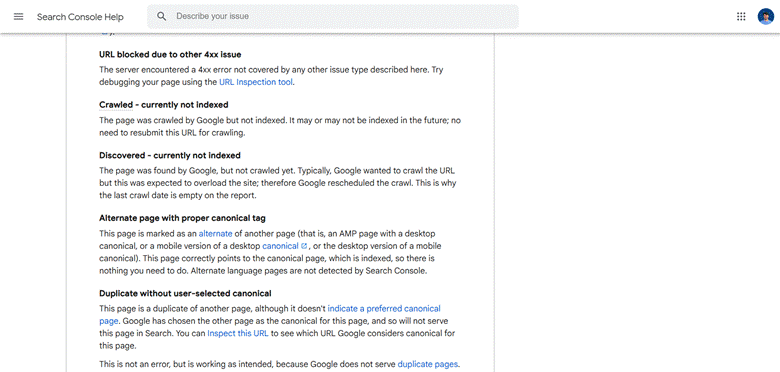
Some aren’t issues.
Others are.
As always, it all depends on your site.
No two sites are ever the same.
The issues you’ll want to watch out for are:
- Discovered/not currently indexed: Google has this URL in their queue, but decided other URLs should get priority first.
- Crawled, not currently indexed: Google saw/crawled the page but decided they didn’t want to include it within their index.
- URL marked noindex: See if that page really deserves to have a noindex tag (I’ve seen some websites accidentally noindex their entire blog).
- Blocked by robots.txt: Make sure you’re not accidentally blocking Google from accessing any priority pages (or again, your whole website – it’s more common than you think).
- Soft 404: Could be a live page with no content being interpreted as a 404
- Canonicals: You’ll see multiple issues relevant to canonicals; you just want to make sure your canonical tags are properly set and you’re not falsely canonicalizing a page.
For an easy overview, you can use the “All Known Pages” filter at the top.

Select your sitemap or individual sitemap pages.
This will now show you pages that should be indexed but aren’t for whatever reason.
That’s the indexing/crawling side, but user experience is a part of technical SEO, too.
User experience is probably one of the most misunderstood areas of SEO.
Getting your page score from 75 to 80 does not positively affect your SEO.
It’s usually just a waste of your SEOs and developers’ resources.
Unfortunately, brands give way too much weight to these “SEO fixes.”
BUT, that doesn’t mean it’s not important.
And this isn’t just about SEO either.
It’s about the user.
I mean, literally put the two names together.
What’s a user going to think when they land on your site and it’s barely usable on mobile?
It’s an instant turnoff.
No amount of SEO traffic is going to fix that.
And in this case, yes, it’s negatively affecting SEO, too.
Especially since Google uses mobile-first indexing for crawling pages.
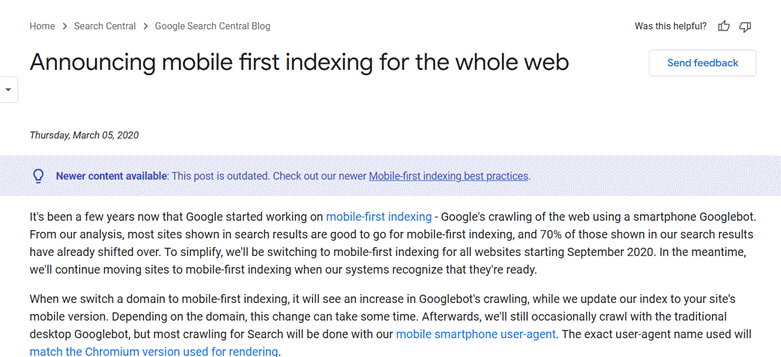
If you’re focusing on user experience, always think about the user first.
What’s good for the user is typically going to be good for SEO.
Sure, there are some exceptions, like fixing rendering issues (how search engines can read/understand your content).
But if SEO is your main justification for these tasks and it’s not noticeable to the user, then it’s likely just a waste of time and resources.
It likely won’t lead to anything.
Not even a ranking boost.
With all that said, if you are looking to improve UX, here are a few things to know:
- Are your pages loading fast enough for your users?
- Are your contact forms formatted properly on mobile devices?
- Is your website overloaded with ads?
- Is your site bland or immersive for users?
- Is your site structured in an easy-to-understand layout?
- Is your site responsive across all devices?
These all start with the user.
But still benefit SEO.
#3. Audit Your Product/Solution/Platform/Industry Pages
Once you have technical SEO and CRO covered, you can begin focusing on content.
Here, you’ll want to start with your easiest possible wins.
Those are usually your platform/industry/solution pages.
These pages are always heavy hitters for driving quality leads.

And not even just from SEO.
But every other channel, too.
That’s because they come with two benefits.
They:
- Educate users on your site about your product and its use cases
- Capture direct search traffic from people searching for that feature
And it’s not like a user is landing on a blog, either.
They’re landing on a page built for conversions.
One that describes the exact product they’re looking for.
And shows how they can use it to solve their specific problems.
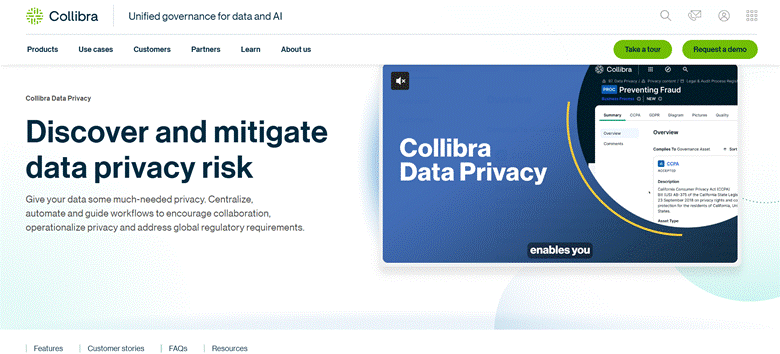
However, these pages will focus very heavily on UX.
You can’t sacrifice these pages for the sake of SEO.
They act more as sales enablement, so your optimizations can’t shift focus away from that.
I usually recommend clients structure these pages as 75% user experience and 25% SEO.
Find opportunities to sneak your main money term in the:
- H1
- Title tag
- Copy
- Header tags
But do it in a way that doesn’t make the page look like it was built specifically for SEO.

You know what I mean.
The secret to these pages is:
- Making sure your title tags and H1s have the target keyword
- Having each solution page internally link to each other
- Creating a fully comprehensive roundup about this specific product/use case
- Building backlinks to it, if absolutely necessary
These pages are one of the easiest to rank, while also being the most beneficial.
Probably the most low-leverage/high-reward tactic possible.
Bonus tip: If you aren’t sure how to go about optimizing those pages, you can use GSC to help you out. Just plug in your landing page URL as a filter and take a look at the keywords Google finds relevant for that page. Find one that’s relevant to your product and then optimize the page for it. And of course, request it to be indexed after you do so.
#4. Find Quick Wins That Have Conversion Intent. Preferably Software/Product Keywords
You also want to find other conversion intent keywords across your site.
Most will be tied to your landing pages.
But others will be tied to your blog.
Usually, these will boil down to your product keywords.
Like:
- Software
- Product
- App
- Tool
- Solution
- Alternative
- Vs
I mean, these keywords are quite literally called “money keywords.”
They work extremely well for targeting an audience who’s actively in-market for your solution.
Someone who’s searching for a specific type of solution.
And is looking for products within that solution category to consider.
These terms will probably make up around 5-10% of your overall search total addressable market (TAM).
But you’ll have that much more success from SEO by going after them.
These aren’t future buyers we’re targeting; these are active buyers who are in the final stages of making a decision.

To find these opportunities, you’ll want to:
- Head over to the GSC performance tab
- Set the date range to the last 28 days
- Add a RegEx query filter for: .*(alternative|software|product|platform|tool|solution|best|vs).*
- Export your data to a spreadsheet
- Add a filter for average position 4-20
You’ll now have access to all easy-win money keywords.
This is where you should put most of your effort before even creating new content.
You can use the advice I gave above to update your product pages.
But you’ll have more flexibility with how you update the blogs.
You can:
- Update the content so it’s still relevant.
- Perform additional research around the product being mentioned. I’d even implore you to sign up for a free trial of that product to get firsthand experience with it.
- Update the content for readability.
- Find opportunities to point internal links towards it from other articles.
- Include details that others aren’t. Pricing info, reviews, pros, cons, case studies, etc.
Start with these pages and give them your full attention.
After that, you can move on to updating your non-BoFu content.
#5: Find Ways to Update Your Informational Content
If your site has some age to it, you likely have some easy content wins you can go after.
Sure, it depends on how much content you have.
And how it’s been written.
But the fastest way to see results from SEO is through your existing content.
Again, most marketers feel like SEO takes too long.
It’s marketers’ #1 pain point and a reason why PPC budgets dominate SEO.
Its time-to-results.
Well, I’m here to say that SEO doesn’t have to take long.
The industry-standard 12-month guideline from low-quality SEO agencies has always been BS.
There are so many factors involved that it’s hard to lump every site’s timeline together.
As always, it depends.
But, usually, the people saying this are just trying to lock you into a longer contract.
If you want quicker wins in SEO, it starts with updating your existing assets.
Here’s why:
- Your content is already mostly built out. The content is already there, so you don’t have to start fresh for it to rank better
- The page probably has authority built up due to links or even age
So, if you want to go after these opportunities, you should:
- Look for low-hanging-fruit keywords: One of the easiest opportunities to go after, these keywords rank on the bottom of the first page and top of the second page. Here, you’ll just want to see what you can do to improve that content.
- See if any pages are cannibalizing each other: Cannibalization is very common for sites creating tons of content where an SEO hasn’t been involved. Here, you’ll want to see if cannibalization is actually happening and then either merge the two or update the underperforming page so it targets a different page intent.
- Merge or update dead content: I guarantee you that you have content on your site that’s doing nothing. Over the last month, it has had 0 clicks and low impressions. It’s dead. Here, you can take that content and merge it into another page to make it more comprehensive.
- Make content more product-led: I touched on this before, but if you have a page receiving a high volume of traffic, it could be worth considering whether you should update that page to make it more product-led. Meaning, adding a section in there that touches on how the reader can solve this problem using your solution.
Just a note: these updates shouldn’t be done just for additional traffic.

Gauge the overall page to see whether an update could drive more qualified traffic instead of just traffic overall.
Meaning, if you update that page, will it still drive relevant ICP traffic to your site?
#6: Build An Engine For Repurposing Your Content Assets
Repurposing content is still incredibly underrated for most marketers.
It’s one of the best ways to manage multiple distribution channels.
And it helps prevent your marketing team from being burnt out.
Especially for the poor early-stage startup marketer doing everything.
The idea behind this is to take value from your assets and adapt it to other distribution channels.
And I don’t mean copying and pasting, either.
That’s a horrible way to do this.
However, I do mean:
- Using an article to make a LI carousel, newsletter, video, etc.
- Taking a well-liked carousel and turning it into a fleshed-out article.
- Taking an ebook that isn’t driving downloads and converting it into articles
- Making a video into a YouTube short, an article, or a social post
You’ll learn more about this in the next section, but video comes with the most benefits for repurposing.
Bonus tip: If you’re looking to speed up the process for repurposing content, I recommend building out specific AI agents for each channel. Ex: I have a LinkedIn Taylor Bot that has dozens of examples of my LinkedIn writing, so all I have to do is plug in an article, and it will spit out a LinkedIn post in the form of my voice. You can do this for articles, video transcripts, and email copy, too.
#7: Video Should Already Be A Part Of Your Marketing Mix
You’re doing your brand a huge disservice if video isn’t a part of your marketing mix.
It works insanely well for content repurposing.
Your videos allow you to:
- Make clips for social and YouTube Shorts
- Create articles using transcripts
- Get promotional access to new audiences through your guests

In the photo above, I was able to build an automation that takes a client’s YouTube video and instantly turns it into a blog and LinkedIn post.
It makes it extremely easy to get a head start on both channels.
Your videos can be powerful for understanding user behavior, too.

Unlike social, you can directly see how users are interacting with your videos, like:
- How long did they watch the video for
- Where they fall off during your videos
- What sections of your video they care most about
- If that video is resonating with your audience and is getting a ton of likes
But even beyond repurposing, video will also act as your brand’s AI shield.
It’s the easiest way to establish your voice and stand out from others.
With written content, everyone thinks they can scale low-quality AI content with a single prompt.
But a video can’t be replicated in the same way.
At least not yet.
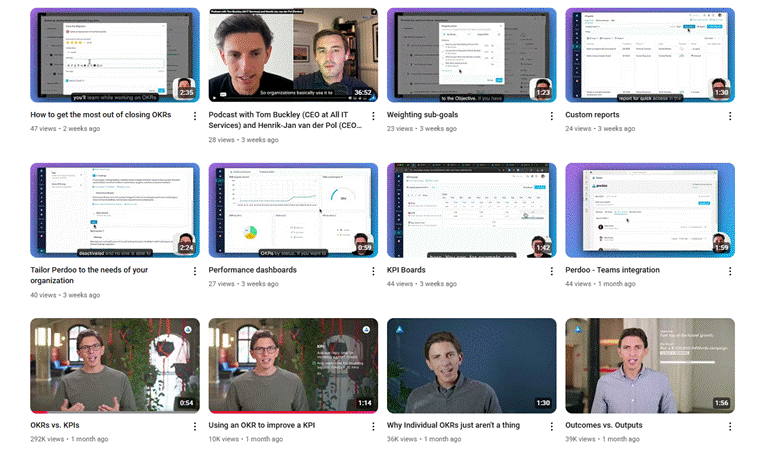
But still, when you focus on video:
- You come across as more authentic and real
- You translate your message better for your audience
- You capture your audience’s attention better
That’s not to say you shouldn’t create article content.
But think about average engagement across medium types.
An article (like this) will probably take you 15-30 minutes to read.
Whereas for a video, I could probably turn this into a 15-minute video.
But it’ll be much easier to condense this information with direct examples and visuals.
And it takes significantly fewer resources to create.
A short video, in some cases, can only take an hour to create.
I can even use my phone to record a quick video in under a minute for reels, LinkedIn, or YouTube Shorts.[1]
With an article, a lot more is involved.
You have to:
- Create the article brief
- Write the article
- Edit the article
- Optimize the article
- Creating infographics for it
- Grab SME insights, quotes, and data
- Publish it
(You probably don’t want to know how much time I’ve spent on this article – I have to be at over 20 hours at this point)
We’re also neglecting the fact that YouTube is a search engine, too.

Source: Sparktoro
It’s the second-largest search engine next to Google.
It’s something most B2B SaaS companies completely neglect.
Especially when product-led videos can work even better than articles.
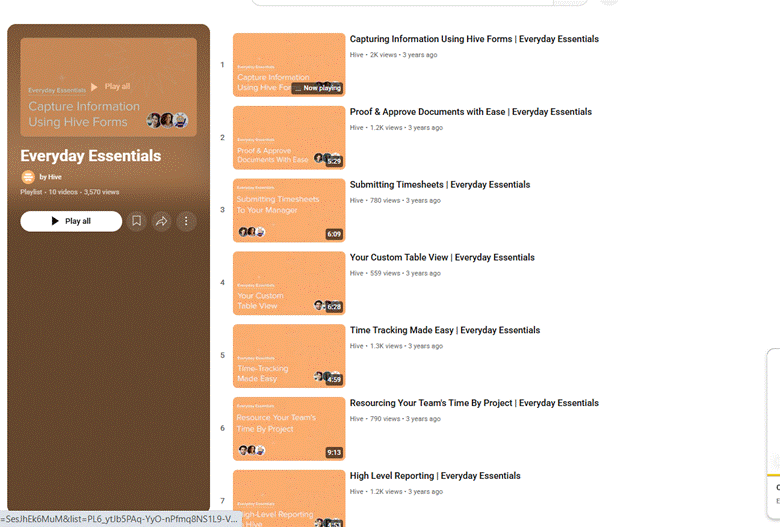
Instead of explaining your solution’s benefits through words, you can just directly show them how it works:
- With a video, you can record it entirely on the actual platform
- With an article, you’re usually just limited to screenshots
If anything, video offers the best way to generate demand and capture it at the same time.
You can build demand through quality, helpful, unique, and engaging content.
And capture demand through search.
Especially since your videos can directly support your SEO.
When you combine both, it’s unbeatable.
Your video can:
- Get found through the SERPs (taking up more SERP real estate – think if you have an ad, organic listing, and video)
- Be found on YouTube Search
- Be embedded in your article for readers
- Have the transcript formatted into an article that’s then used for SEO
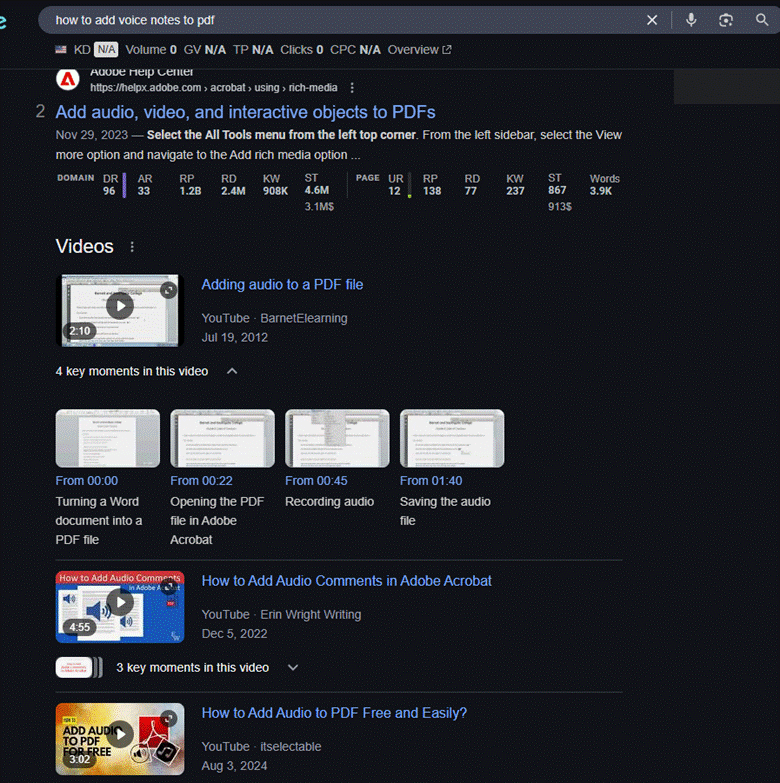
The possibilities with video are endless.
And now is the best time to start.
#9: Put Together Your Full Content Strategy
“We already talked about strategy!”
Yes, we did.
But that was your overall SEO strategy.
Now, it’s time to talk about your content strategy.
And how that aligns with your overall SEO goals.
You have all the data you need here, which includes:
- Customer research data
- Pain points from our audience
- Business goals
- Product information
Now, we’re putting together our plan of attack.
To do so, you need to keep a few things in mind before picking your actual content topics.
Your Content Has to Have Some Relevance to Your Product’s Use Cases
A common problem I see SaaS brands making with their content is avoiding topics that build consideration.
If a user is landing on your content for answers/solutions, your product has to be positioned as a potential solution.
In some cases, a no-brainer solution.
Sure, you might generate demand for the brand by creating genuinely helpful content.
But that demand is only for the content you create.
Not the product you offer.
When you start with a product-led approach, you directly position your product as a solution when users are actively searching for solutions.
Sometimes it’s a paid solution like yours, and other times, they just want a free solution.
You’ll want to include both solution types to make your article as comprehensive as possible.
Again, for both the user and SEO.
I think Tim Soulo, CMO at Ahrefs, says it best:
Every article you publish should be a sales page for your product. Can I persuade the reader of this article to buy my product?
The first goal of your content should be to promote the product and build consideration.
Not:
- Increase traffic
- Grow BS rankings
And Tim is exactly right here.
Can this article act as a sales page for your product?
Can it persuade the reader that your product is a potential solution while they’re actively on your site?
It’s just wasted potential if you ignore this.
Tim sees this as “business potential.”

He’ll score his content ideas from 0-3 based on:
- (3) – Your product is an IRREPLACEABLE solution to a given problem.
- (2) – Your product is very helpful, but not critical for solving the problem.
- (1) – Your product can be mentioned, but it’s not super helpful in solving the problem.
- (0) – There’s no way to shoehorn your product while talking about this problem.
And, of course, 2-3 are the scores you should prioritize first.
I’ve always seen this as “problem/solution/most-aware,” but I think Tim’s methodology is a much better way of thinking about it.
You need to ruthlessly prioritize the content that will drive leads for you.
You Should Leverage As Much Customer Research Data As You Can for Guiding Content Creation
The days of creating copycat content are over.
Think about how much content the average person sees daily.
Across all content mediums:
- YouTube
- TikTok
We’ve quite literally been experiencing content overload for the past few years.
So, building real estate with your audience is not a one-and-done type of thing.
And if you’re saying the same thing as everyone else, you’re bound to drown yourself in a sea of mediocrity.
If you think you can do quantity over quality, you’re just making it harder to build a reputation for your brand.
You might even be hurting it.
But there is a content type that stands out compared to the rest.
It’s content that speaks to a specific type of person.
It:
- Feels unique and written specifically for your ICP
- Isn’t copied from the SERPs
- Doesn’t feel like it was written for SEO
- Doesn’t feel like engagement bait
- Is genuinely the best resource available for that specific thing.
And content that is obviously created for a specific type of person.
To be seen, you have to be heard.
And to be heard, you have to have people listen in the first place.
To do this, you need to have content that speaks directly to your audience.
I’m sure you can see where I’m going with this.
That’s right!
This is exactly where your customer research data is going to make the difference.
The more data you have on your audience, the more aligned your content will be for them.
This data will heavily fuel your “why.”
And I’m not talking about keyword research.
I’m talking about customer research at scale.
Whether that’s:
- Surveys to existing clients
- Reviews
- Customer success teams
The more data you have on your audience, the more targeted your SEO and content efforts will be.
This data lets you speak to your audience.
You understand what problems they’re facing and what they want from a solution.
Plus, your insights help make your content unique.
Which will help you rank better since you’re adding something new to the conversation while still nailing down content relevancy.
Your data also guides you away from picking topics that make no sense for your brand or product.
Each topic has to have a purpose, both for your business and your reader.
Why should they take time out of their day to read what you have to say?
By incorporating your audience insights into your articles and content, your audience doesn’t have to ask themselves that question anymore.
They just seek you out automatically. You become a trusted brand around that specific topic.
If you want to scale up your audience research, LLMs work extremely well for organizing large sets of data.
For example, you can upload your customer research docs to Claude and have it:
- Recognize patterns based on pain points
- Explain the cause behind those pain points
- Understand potential industry trends based on audience sentiment
- Piece together a more refined buyer persona
We’re processing customer research data at scale for marketing.
Not SEO.
Marketing.
Our marketing efforts become that much more tight-knit once we can use those insights at scale.
This helps by:
- Creating content that is genuinely understood by your audience: This buyer persona feels like they’re being heard. This makes your content much more unique and relatable than content that’s just repeating what’s already out there.
- Putting together keyword research based on what our ICP is likely searching for: We have a better understanding of what our audience is searching for, how they’re searching, and the terms (this is huge) they’re likely to use. Meaning, a VP of marketing at a SaaS company is more likely to use specific terminology than a junior marketer or intern.
- Guiding all other marketing channels: You now have a better understanding of where your audience is active and how you can reach them.
SEO should never be viewed in a silo.
And these insights at scale will naturally pull you away from that mindset.
Take A Hard Stance Against Obvious AI Content
Nothing kills differentiation faster than tossing out obvious AI-generated slop.
It’s the quickest way to undo any effort to stand out from the crowd.
Most B2B marketers are feeling burnt out from it.
You can’t avoid it, and it’s only allowed people to scale up incredibly mediocre content.
I’d even argue that obvious AI content will actually cause more harm than good to your brand.
It comes across as lazy and doesn’t do anything to build positive associations with your brand.

Still, that’s not to say you should avoid AI entirely.
It has its benefits.
In my case, I use AI to help:
- Flesh out my content briefs
- Add insights that I might be missing
- Include different ways to rephrase my content or bullets
I honestly think AI is a great tool for assisting with content at each stage.
But don’t fully rely on it for content without taking proper steps to prime the LLM.
Meaning, don’t expect great content with a click of a button.
Instead, you can:
- Build out agents that are primed to perform different tasks, like understanding your audience data, brand, and product.
- Create different workflows that clearly define how your content should be structured (sentence structure, style of writing, tone, etc).
Even with these agents and workflows, I still have a writer involved in the process.
I’ll use AI to help give them better insights, but according to most writers, they’d rather start from scratch compared to reworking something that makes them start from scratch anyway.
But with all that said, throw away the expectation of using AI to easily scale up content without a human element in place.
Instead, see it as a tool to empower each team across the entire process.
Prepare Yourself for Zero-Click Searches
SEO is rapidly evolving thanks to AI summaries.
The biggest change to expect with SEO is zero-click searches.
In fact, it’s already here.
Nearly 60% of Google searches end without a click.

Meaning, the searcher found what they were looking for directly on the SERPs.
Or just did another search to find something else.
But of those searches, only 40% led to a click.
Not a website visit.
But just a click on the SERPs.
Of that 40%:
- 70.5% went to an organic result
- 28.5% went to YouTube, Maps, Images, News
- Only 1% went to a paid ad (womp womp)
The SERPs are becoming increasingly saturated with more features.
AI overviews, “People Also Ask” snippets, Reddit threads, and social posts now take more SERP share away from the traditional blue links.
So, what do we do about the 60% of zero-click searches?
There are a few ways you need to prepare.
Being Featured More in AI overviews and LLMs
Google has reported that AI overviews are actually increasing engagement on the SERPs.
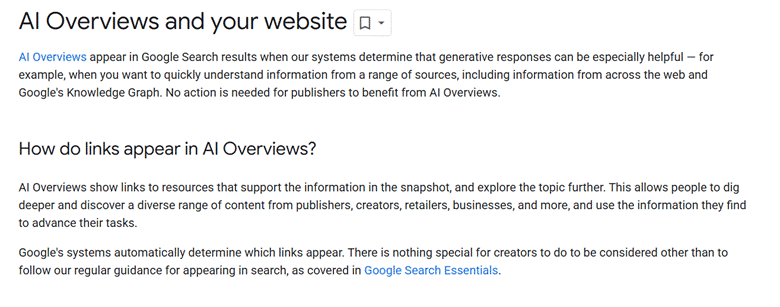
You might think this is an issue that will take away clicks to your site.
I mean, it will definitely take away clicks.
But that doesn’t mean you can’t optimize yourself for those results.
If anything, there’s a huge opportunity that most are neglecting.
Product-related searches.
Searches like: “Best OKR software for startups” or “Qualitative alternatives.”
Sure, how users search has changed.
The intent behind their searches hasn’t, though.
People will still use Google or LLMs to research potential solutions for their brand.
LLMs now just enable them to get more specific with what they’re looking for.
Your goal now is to be visible during that search.
If you think about it, that’s still just SEO.
The strategy is the same, but how we go after visibility is different now.
Now, it’s also about showing up in AI-generated overviews when it matters most.
When you think about it, this actually puts you at an advantage, if anything.
The user doesn’t have to click around to different links for likely biased answers or rely only on the first ranking result.
They’re getting what they “think” is an unbiased answer, generated right on the SERPs.
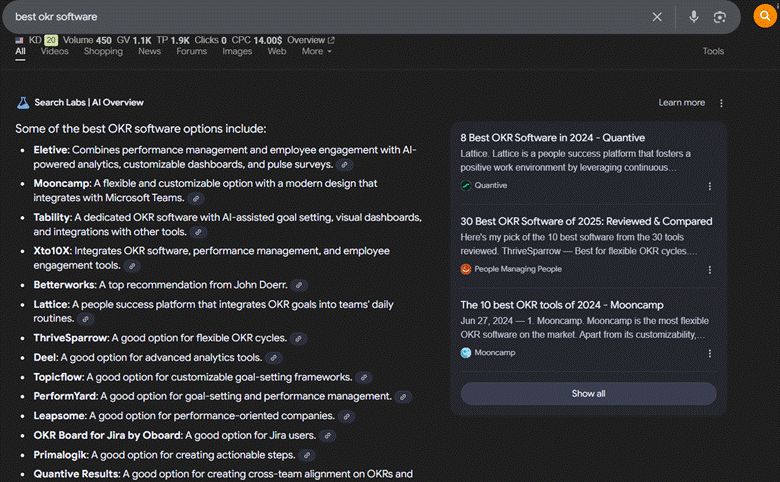
Your product is now getting visibility beyond just your website.
LLMs and Google are actively marketing your product for you.
So, you’re probably asking yourself, “How tf do I even get featured in an LLM?”
While a lot of the optimizations for LLMs overlap with SEO, it’s actually not too complicated.
But it does require work.
You have to:
- Get featured on other sites related to that topic: In the OKR example, your product should be listed in other articles mentioning the “best” options within that category.
- You need people talking about your brand: Google leans heavily on Reddit to train their LLM models, so if people on r/startup are talking about you as an option within that category, it will only further establish you as an authority on that topic. PR will help with this as well.
- Provide as much data on-site and off-site about your product and who it’s for: This is pretty similar to NAP (Name, Address, Phone Number) with directory building, but make sure there is enough information on your site and other sites that clearly explain your product and who it’s for.
There have actually been studies done that show that creating category content around your product increases the likelihood of being featured.
We can even see this firsthand.
The top-ranking result for “best OKR software,” Mooncamp, is being pulled directly from a category article they created.
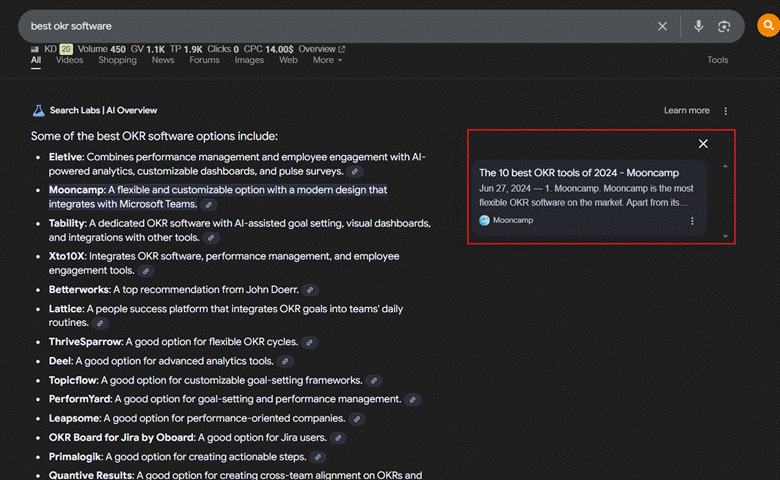
We see this again here for ChatGPT’s search feature.
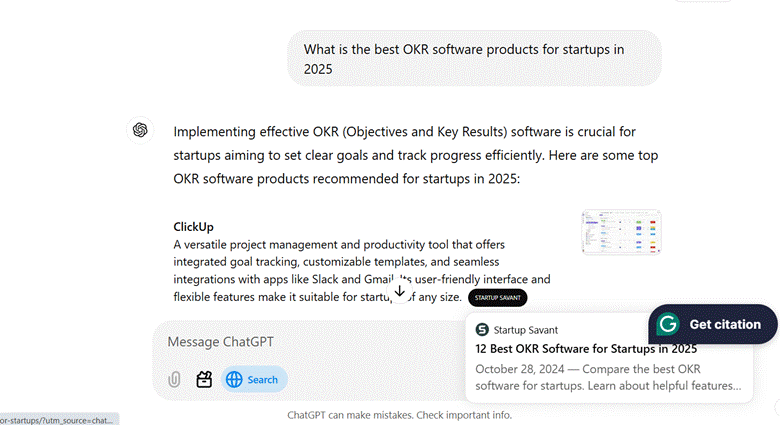
So, if anything, this tells me that product-focused content is still a must for content strategies.
But now, we’re getting more reach with it beyond just traditional blue links.
Niche Down and Find Topics That Can’t Be Answered by an LLM
There’s no doubt that certain content topics will be answered by LLMs.
But really, ask yourself, was this a topic that I wanted to rank for anyway?
Was this a topic that realistically could’ve driven leads for me?
I’m willing to bet that answer is no.
In most cases, these were topics that could easily be answered by an LLM in a few sentences.
Yet most brands created 5,000-word articles to rank for it.
Like:
- What is SEO?
- UX definition
Here’s the thing: these searches were always purely informational.
They might have given you some traffic.
But that traffic wasn’t in-market for your solution and didn’t give the slightest indication that they ever would be.

Source: Andrew Holland
There are also so many different audience types that could be searching for this.
Do you think a CFO is searching for “what is a spreadsheet?”
But there are a few ways to make your content LLM-proof.
This could be a whole post of its own, but it’s generally influenced by:
- Understanding the intent behind each search and writing topics that can only be answered by experts in that field: There are some searches where it just can’t be answered by an LLM. Only an expert within that field can answer it and help their audience truly understand what they need to do. For every search, try to think about that intent. Is this something an LLM can answer, or does an expert need to provide additional context?
- Having actual experts or well-known leaders write your content: If you want to create expert-written content, you actually need an expert to write it. At this stage, I think we’re done with content on highly complex topics that’re ghostwritten by junior writers. By having an expert or well-known thought leader write your content, you’re adding more perceived value to your content. It’s something that can’t be found elsewhere and incentivizes people to actually read and trust your content.
- Tying a unique angle to each content topic: Be different with each content type. If you’re creating the same content as everyone else, there’s no additional incentive to hear what you have to say.
My old boss and mentor, Frank Olivo, the founder of Sagapixel, recommends using the BARS framework to find topics that can’t be answered by an LLM.
This means whether this topic is:
- On the buyer’s journey?
- Potentially answerable by AI?
- Ranking for keywords we can rank for?
- Able to drive enough search volume to be worth our time?
But for your actual strategy, this has to be considered.
Otherwise, your content will largely be a waste of time and resources.
#10: Piecing Together Your Content Roadmap
Now you have some context on how to structure your content strategy.
Let’s talk about how you should structure your actual content roadmap.
Obviously, revenue is your main goal.
So here’s how to prioritize your content for revenue growth.
I Don’t Care How Many Times You’ve Heard It, You Have to Start with Bottom of Funnel Content
When you begin your SEO, you should always start with topics at the bottom of the funnel and work your way up.

That way, you can capture conversions (revenue) first, then work toward building awareness.
This will likely be “vs/comparison” content.
It allows you to show your audience how you match up against your competition and why you ultimately consider yourself to be the better solution.

Think about it: What type of user would search for this?
Someone comparing two platforms against each other and looking for the best solution.
And, more importantly, someone making or influencing a decision.
Not only does it act as a high-intent search, but it’s an invaluable asset for your sales team, too.
And if you’re hesitant to mention competitors, don’t be.
Do a search for your brand vs them.
Chances are, they have an unfavorable article comparing your product and theirs.
This allows them to control the narrative around your product without you being able to defend yourself.
Let’s be honest: most buyers will know your competition exists and compare you against them.
But if you give your side of the story, you can help steer the narrative closer to the truth and sway users toward your solution.
Bonus tip: Make sure you have a clear call to action on these pages since they have high conversion intent.
Create Category Content Around Your Service/Industry Category
To capture more bottom-of-the-funnel searches, you can use “best of” content to attract users comparing different products in their market.
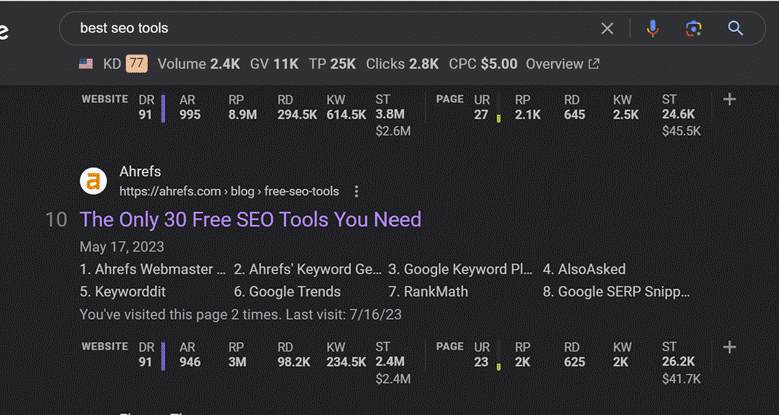
A user who searches for “best x tools” is obviously already interested in the solutions available.
They’re now trying to find the best option in that category. So, if you have a page for the “best employee retention software solutions,” users want to know their options and which product is the best.
This is a great opportunity to control the narrative and pitch your software as the “best.”
If you go down this route, make sure you don’t insult the other products.
Make your product the “best” while giving honest reviews about yourself and your competitors.
And if you’re not the best, you can use what you learn about competitors to improve your solution.
Examples of Category Content
- Best free SEO tools
- Best employee retention software
- Best Time Tracker App for Freelancers
Position Yourself as the Next Best Option with “Alternative” Content
Similar to “best” content, this type of content applies to people in the solution-aware/most-aware stage.

“Alternative” searchers generally have a solution in mind, but there’s something holding them back.
It might be too pricey, incompatible with their current system, or lack a niche feature that’s essential to your ICP.
So, they seek out other available solutions.
Say your main competitor is Ahrefs.
Ahrefs is known as one of the best tools in the industry, but they are pricey.
Users know they want to use a tool like Ahrefs, but can’t due to the cost.
You can capitalize on this by creating an article around “Ahrefs alternatives.”
This is a great opportunity to highlight the competition’s strengths and weaknesses and show why your product is a solid alternative option.
Examples of Alternative Content
Move Up the Funnel to Target User Pain Points for Middle of Funnel Queries
Make sure you have a full range of BoFu content built out before you move on.
Once that’s done, you’ll now want to target middle-of-funnel queries.
This is your chance to build consideration with your audience.
Your chance to:
- Capture users actively seeking solutions to problems your product solves
- Showcase a mini product demo without requiring sales team involvement
- Create a direct business relevancy score between content topics and product features.
Basically, the goal of each MoFu article should be to act as a sales pitch for your product.
As Tim Soulo said, “Will this article convince someone to purchase my product?”
That thinking needs to be applied to every MoFu article you build out.
Otherwise, it’s just wasted traffic.
Here, we’ll be using your pain points from earlier.
We want to take that customer sentiment and tie it to a topic/keyword.
You have to put yourself in the mind of a searcher.
If I were searching for fixes to certain problems, how would I go about doing that?
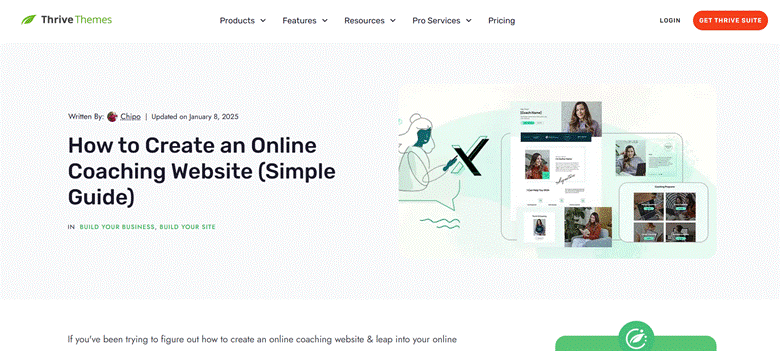
This can be hard for in-house marketing teams.
You have to realize your audience doesn’t know:
- About your solution or even solution type: They don’t know that there’s a restaurant analytics tool out there that can help them track and fix areas that are causing revenue loss.
- What that specific issue they’re facing even is: They know there’s an issue, but they’re not quite sure what that issue is. I know my restaurant is losing money, but I have 0 idea why and I need to fix it.
They are completely ignorant to the answer that you have, so you have to plan your content with that mindset.
How would someone clueless to their situation go about searching for this?
Keyword research tools can be helpful here.
But I think it’s better just to think about buyer behavior instead.
Ex: If a founder is dealing with constant churn in their organization, they might not know the root cause. They might ask, “Why is my company’s turnover rate high?” or “Why can’t I retain employees?” However, the issue could be with employee satisfaction or work friction. While the retention search could be positioned as a MoFu article, the real benefit is addressing the actual issue, which is unsatisfied employees. Now, it’s your job as the marketer to showcase how your product can help improve employee satisfaction.
This is why we started with BoFu content first.
Your MoFu article helped educate them on that issue and maybe even built up some consideration.
But with your BoFu content, you’ve put your brand in a position to capture high-intent traffic when they search for “Best tools to help improve employee satisfaction.”
This is a main reason why audience research is a NECESSITY.
Before you even touch keyword research.
You have to understand the core issue your audience is facing and address it in a way that helps them understand their situation.
And of course, that the best route forward is your solution.
But now, you at least understand how to tie the core issue (employee satisfaction) into three different search types:
- Problem-unaware: Why you (yes, you) are dealing with employee churn
- Problem-aware: Your employees dislike working for you. Here’s how to fix this.
- Solution-aware: Here are the best tools that will help you fix this
Again, none of this would have been possible without our audience research.
Understand their issues, their intent, and how they search, and position yourself as that solution for them.
#11: Writing Content for a New Age in SEO
Is SEO dying?
No.
But the way you need to approach SEO has evolved.
With changing search habits and search algorithms, everything and nothing have changed all at once.
Fundamentals are still the same.
But, how we structure our content is much different now.
Here’s how.
Please Throw Keyword Optimization in the Trash; You’re Now Optimizing for NLP
I want to do an exercise here.
Please envision that your brain is acting as a giant toilet.
I want you to literally put the idea of keyword optimization in your mind and flush it.
Completely forget about it and put it in the past.
Keywords haven’t been relevant for SEO in years.
Instead, you have to optimize for NLP.

Meaning, creating your content in a way that LLMs can understand.
You have to think about how AI models can interpret the context, reasoning, and accuracy based on what you’re saying.
If anything, this is actually a good thing.
It makes it much easier to write for actual humans without sacrificing quality for SEO.
However, there is a caveat here.
You can’t just write more and expect that to work.
Your content has to be:
- Clear
- Concise
- Well-written
- Unique
The old SEO of keyword stuffing, keyword density, and word count is dead.
Although I would argue that it hasn’t been a thing since before 2016.
We Can’t Do Content Quantity Anymore; We Have to Create Content So Good It Makes Google Look Bad
I personally love the way Nick LeRoy put it on a recent Crawling Mondays podcast.
We have to build brands so insanely in-demand that if Google doesn’t include us in the SERPs, it makes them look bad.
I think this also applies to content, too.
It’s no surprise that public opinion of Google has significantly dropped in the last year.
Not even 2 years; it’s really been the last year.
From:
- Being declared a monopoly
- Firing their search quality raters
- Countless articles calling out flaws in their algorithm
- The horrible rollout of the helpful content update
- LLMs like Perplexity and ChatGPT slowly stealing away search market share
It’s just been a rough year overall for Google.
And searchers have been feeling it too.
Even from my side, the majority of the content I see on the SERPs is just low-quality AI-slop.
But this isn’t an “if you can’t beat ’em, join ’em” situation.
This is a “we need to make content so good, it shows Google as flawed if it’s not even being ranked.”
When you’re creating content, it’s not about SEO anymore. It’s not about rankings or traffic.
It’s about creating 11/10 content that makes users want to come back for more.
I think Wil Reynolds put it best during a recent Brighton SEO San Diego talk:
As we move forward, the most successful content strategies will be those that balance algorithmic performance with genuine human connection. It’s time to stop optimizing just for search engines and start optimizing for the one metric that truly matters: turning visitors into fans.
Remember: A fan isn’t just a metric – they’re a business asset that compounds in value over time. Start measuring your content’s success not by how many people find it, but by how many people come back, share it, and become advocates for your brand.
SEO will still be important here, but you have to drop the idea of “SEO content.”
No keyword-optimized content.
No word count.
Just content that’s still slightly optimized for SEO, but puts readers first.
I think if you combine what Wil and Nick are saying, you realize that you shouldn’t and don’t have to sacrifice your content quality for “SEO.”
SEO is still a priority here.
But if Google is prioritizing sites like Forbes and LinkedIn over expert-written content, then you have to become unavoidable to your audience.
And if your brand and content are so in demand but are still being outranked by high-authority sites with low-quality content, then it only makes Google look worse.
So, how does this all apply to SaaS?
It means you’ll have to:
- Create truly unique content that comes from an actual subject matter expert: Experience will always be your bulletproof vest with AI. It’s something it can never replicate, so if you want your content to be in demand, it has to be written in a unique way and not copied from the SERPs. SME writers are going to be the next content marketers.
- Rely heavily on research, especially first-party research: This will only add to how unique your content is. Create polls, surveys, reports, etc. Create data that not only supports your content but also increases awareness. When you come to the table with highly valuable data, it makes it very easy for your brand to get talked about more.
- Don’t neglect visuals or media: One of the biggest mistakes I see most companies make is ignoring visuals. Their content is just a huge wall of text that immediately takes readers out of the article. Don’t use basic stock photography either–it only diminishes the quality of your content. Instead, focus on custom-made infographics, videos, and screenshots. Not only does it make your content more engaging, but it also makes it easy to distribute your article across other platforms and have your audience do the same, too.
- Edit like crazy: I’m surprised we’re not seeing this talked about more, but editing is the most important part of content. Sure, SMEs can provide highly unique content, but you still need someone to organize their thoughts. They’re experts in that specific field, not experts in writing. Plus, with all the fluff in SEO, we need editors to help keep readers active and engaged. Keep your sentences short and to the point. Forget word count. Instead, focus on time-to-value—how much value you can add in as few sentences as possible.
If you focus on the above, you’ll become unavoidable.
And still generate fans in the process.
And if you generate fans for your brand, it only makes Google look bad if users can’t find you.
LLMs Aren’t Killing SEO, But It’s Time to Start Optimizing for Visibility
One thing that throws me off is how companies think that LLMs are going to be the death of SEO.
Especially now that they have search engine capabilities.
But guess what?
Because of those capabilities, you can probably guess what the name for it would be if we wanted to optimize for visibility.
Here’s the thing: LLMs aren’t killing Google or search engines entirely.
They will eat away at Google’s market share.
Even within the last year, Google’s market share has dropped from 89% to 87%.
That’s not a significant drop by any means, especially for a monopoly.
However, there are two things to note here:
- Google has been labeled as a monopoly and is actively under consideration for being broken up
- ChatGPT’s share of search has already grown to 4%

Now, compare that 4% to Bing, who’s only sitting at 2%.
ChatGPT was released to the public only a few years ago, back in 2022.
And to now bypass Bing’s market share only a few years later says a lot about OpenAI’s trajectory.
But, you’re probably asking yourself what the point of this is.
Well, it’s to show you that platforms like ChatGPT and Perplexity will continue to grow in usage YoY.
These tools are all still fresh and are being constantly improved.
But at the same time, there’s no reason for doom and gloom.
While Google might LOSE market share, that doesn’t mean they’re going to roll over and die.
If anything, they’ll still be a player in the market.
But the barriers to entry are lowered now.
We’ll see more competitors enter the market that offer diversity in how your SaaS is found.
We’re not at the whims of Google anymore (even though I’d like this article to rank on Google).
And in most cases, SEO carries over into LLMs.
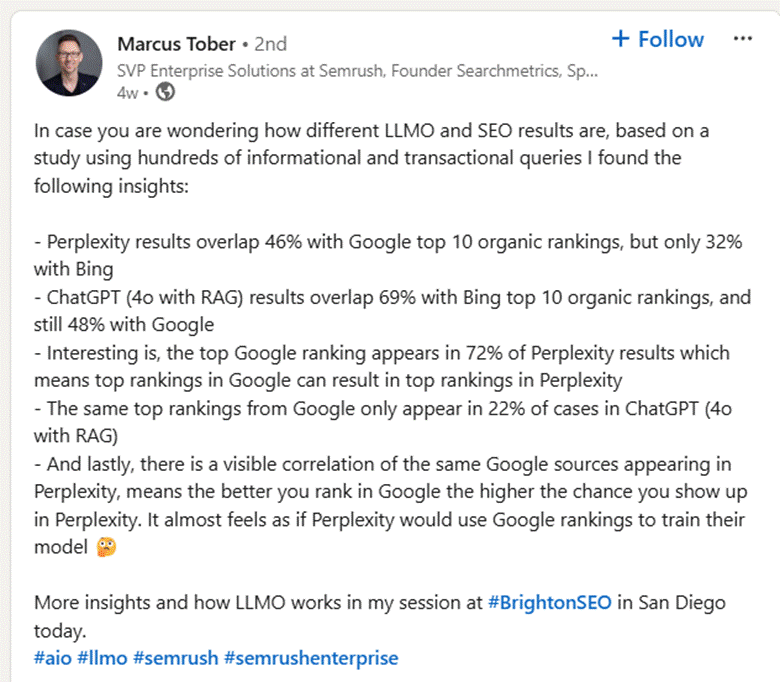
Nearly half of the Google SERPs overlap with Perplexity.
And ChatGPT seems to be relying heavily on Bing’s index for content.
“Okay, Taylor, you spent all this time adding context, but how is this actually relevant to me?”
Well, even though I’m sure no one actually asked that, here’s what we can expect to see because of this:
- People will still ask LLMs typical bottom-of-funnel questions like “best employee management tools for __” or “HotJar alternatives.” Even though those clicks might lead to your website, they’re likely to appear as a snippet instead, so your product will probably be generated in an answer without the user even having to click through different websites.
- We’ll probably see more conversational queries where the user types out a specific question that would only apply to them. Instead of Google lumping pages under 1 search intent, LLMs can provide a much more personalized answer based on the initial query.
- SEO still plays a role here. There was a research report that actually showed if you created “best ___ software” articles and were featured in others, you had a higher likelihood of being included in an output on an LLM
Your Content Needs to Have More Diversity
Gone are the days when you could just publish text content and expect it to work.
With AI, we have to build memorability with our audience.
And we can do this by keeping them engaged with different content formats.
This means things like:
- Videos
- Podcasts
- Webinars
- Calculators
- Tools
These all make your content more interactive and unique.
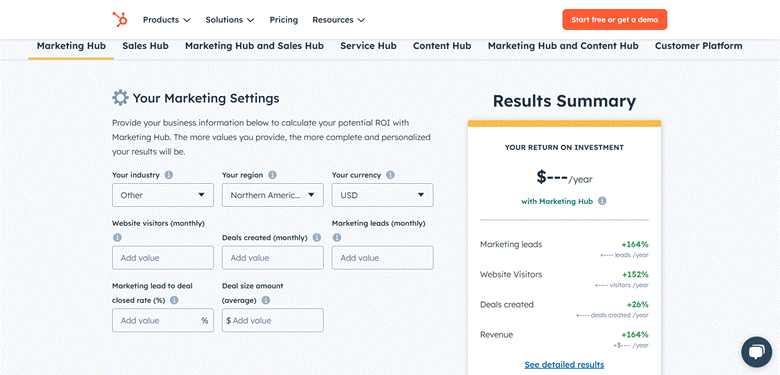
Especially if you don’t gate it.
While gating is nice for capturing contact information, we want to give users a reason to return to our site.
And providing this for free and ungated is exactly how you do it.
#12 Link Building Is a Completely Different Game Now. Arguably, the Most Important Game You Have to Nail
Link building isn’t what it was a few years ago.
Lazy Fiverr guest posting isn’t going to get it done anymore.
Google has spent plenty of resources over the years improving its link algorithm to spot spammy links.
In most cases, cheaping out on link building will only cause more harm than good.
At worst, you’ll be hit with a penalty.
At best, those links will just be ignored by Google’s SpamBrain algorithm.
Now don’t get me wrong: I’m not saying that links don’t matter anymore.
If anything, they’ve always been a main factor.
But now, QUALITY link building is almost non-negotiable.
Which is realistically becoming more and more like PR.
But I mean this in 2 ways:
- Google has been demolishing sites without any authority established: From their recent helpful content update, we’ve seen sites with a lack of authority completely fall off the map, while sites like Forbes and LinkedIn completely rake it in.
- Links (and PR) play a role in how LLMs understand your brand: In another video by Wil, he found that ChatGPT was pulling information from a random website to generate an answer. The LLM knew how to overlook obvious optimizations and instead went for reliable data. So, how people talk about your brand on other sites will influence how LLMs understand your company and who it’s for.
And now (well, arguably always), we have to use a new set of metrics to understand link quality beyond just DR/DA.
Including:
- Page quality: Is this an article that you would genuinely want to be featured on? Think about it from a PR perspective.
- Page visits: Are people still visiting this page, or is it outdated?
- Site authority: Is this site actually legit? Where are they getting their links from? Don’t think about DA here, look at the whole link profile instead.
- Site relevance: Is this site actually relevant to your own site?
- Link relevance: Does the link to your site make sense contextually? Or is it just added in for SEO? Note that Google may factor in link clicks when distributing equity based on backlinks. Meaning, if no one’s clicking on that link, it might be negated.
With all that said, here are a few tactics to prepare you for modern-day link building.
Use Digital PR to Build Site-Wide Authority for SEO and Brand Awareness
While content is nice and flashy, link building can’t be ignored.
And it shouldn’t be ignored, as it’s not just for SEO.
It’s for PR too.
Getting your name out there in front of your audience.
This is why digital PR is still one of the most effective link-building tactics out there.
Not only can you scale link acquisition, but you’re also using it to position your brand in front of the right eyes.
Digital PR aims to create an asset that can be used as a story to pitch to journalists in exchange for coverage.
This might sound similar to guest posting, but with Digital PR, you’re going after highly authoritative websites (usually publications) instead.
If you want your story picked up, it has to be newsworthy.

If you were looking to do digital PR for your employee retention software, you could research data on the following:
- Employee Turnover Trends
- Employee Satisfaction Trends
- Tracking Employee Retention
From there, you can use this story to pitch to journalists who write about similar topics.
You could find journalists from publications like entrepreneur.com or SHRM.org.

I recommend using Hunter.io (a popular email marketing software) to find journalist emails.

Build Links to Both Your Product Pages and Blog Content, Not Just Your Homepage
Your link profile shouldn’t just be made up of your home page.
It should be your:
- Tools
- Blogs
- Landing pages
- Case studies
It’s basic finance.
You’re not putting all your eggs in one basket.
You’re diversifying your link portfolio.
You can’t overload your homepage with links.
So, the best way forward is to distribute your equity throughout the site.
Target different pages with backlinks and have an internal linking network that passes authority throughout your site.
Your anchor text also matters.
Sure, branded anchor text is nice.
But non-branded anchor text is even better.
It directly helps search engines understand the context of the page being linked to and how much weight to give to that link.
Focus on the Content that EARNS You Links
We all know backlinks are a pain to build.
Especially for complex niches like life sciences or supply chain analytics.
But, despite what others say, you still need backlinks for successful SEO.
To make link building easier, you should focus on content designed to earn backlinks.
This could be:
- Statistics articles
- Trend articles
- Thought leadership articles
- Infographics
Additionally, you’re not paying for a backlink, either.
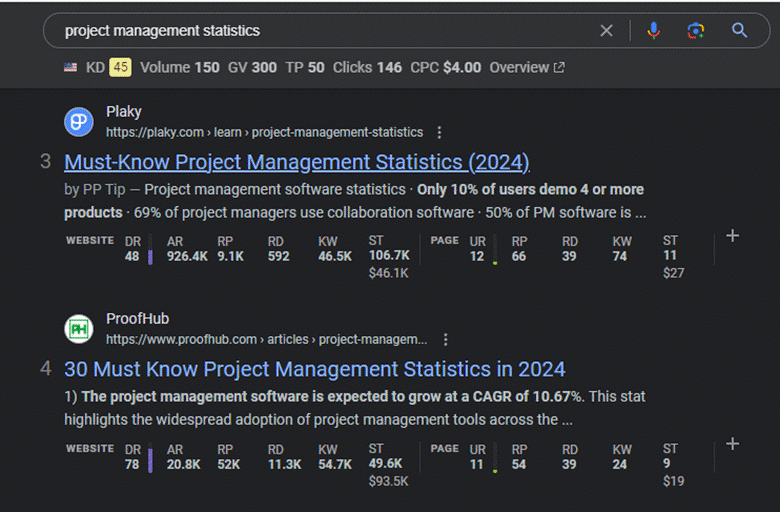
These articles are designed to bring backlinks to you rather than you going out for them.
For a Supply Chain Planning SaaS, this could be:
- Supply Chain Trends
- C-Level Thoughts on Industry Trends
- Inventory Optimization Statistics
Articles that will not only bring in links, but relevant ones too.
#13: Focus on Housekeeping, But Only When Relevant
While there is a lot to cover here, housekeeping in SEO is essentially taking care of small fixes that may be holding your SEO back a bit.
This includes:
- Updating links pointing to dead pages
- Making sure pages have at least 1 internal link pointing towards them
- Not having too many links pointing to redirects and/or redirect chains
- Making sure every page has an H1 and a title tag
- Linking to pages with a high crawl depth
You can scrap meta descriptions.
They’re a waste of time almost 95% of the time.
SEO Tips From Expert SaaS Marketers
I asked a few of my colleagues for their best SEO tips and what they would say is their best piece of advice for a SaaS company looking to get started with SEO (or actively doing SEO).
Here’s what they said:
Usman Akram, Growth Advisor at Omniscient Digital:
I have two pieces of advice for any early-stage company looking to build their organic growth engine:
1. Don’t invest in SEO without evidence of potential commercial value. Just because SEO is often a go-to strategy for scaling doesn’t mean it’s right for your business. You’re not “supposed to” do SEO simply because it’s common practice. First, determine whether search can genuinely drive customer acquisition for your business. A good starting point is quantifying your industry’s search TAM (total addressable market).
2. Once you’ve identified potential in search, focus on building a real strategy instead of trying to growth hack your way forward. Many companies fall into the trap of random acts of SEO when starting out. This often looks like working with a freelance SEO specialist (not a strategist), publishing a handful of generic blog posts, chasing random backlinks, or fixing 404 errors here and there. While they’re “doing SEO,” they lack an actual SEO strategy. Instead, start with your business objectives (measurable goals, not your mission statement), quantify your search TAM, assess your competition’s activity, and align your resources to create a long-term roadmap. A simple framing question like, “What are we trying to achieve, and by when?” can be a great way to begin.
Josh Spilker, Content Lead at AirOps:
1. Don’t do SEO unless you already have good product market fit and know exactly who your target is.
2. Once you have that figured out, I (still) like prioritizing keywords based on CPC if your main goal is transactional (i.e. people landing on your site and buying from you).
3. If you’re spreading your brand footprint and can leverage data sets, then programmatic is a good way to go. You’ll get higher impressions but lower clicks.
Tanaaz Khan, Content Strategist for B2B Brands:
I’d say the best thing you can do is amplify your strategic narrative, POV, and brand/product through SEO. What I mean is SEO is another distribution channel so when you’re building that strategy, it should fit into your larger marketing (and business) strategy.
Ideally, you should amplify whatever you are saying or want to say going forward—SEO just helps you reach your audience in a different place. Too often, companies think of content in terms of keywords but that approach will fall flat when you don’t have anything substantial or original to say.
So, do what you’re doing while keeping the bigger picture in mind.
Ben Goodey, Founder of Spicy Margarita:
Right now it would be some form of my latest newsletter: https://seo.thefxck.com/articles/rank-existing-content-higher/. I see way too many content teams focused on output volume and new content production, without making sure the content they’ve already produced ranks well. If you’re diligent and creating super high quality content, don’t let it collect dust. Make sure it ranks. This is especially important if you create the highest conversion potential content first (i.e. BOFU content)—this is your money making content, so make a conscious effort to rank it higher every day.
Bill Gaule, Founder of SERPSculpt:
My best piece of SEO advice for a SAAS company is taking the time upfront to research & develop your strategy. It’s easy to fall into the trap of producing content for the sake of production. However, when you take the time to really understand your ICP, you can build out a roadmap of topics around their intent & buyer journey. This focus on your target audience leads to a winning strategy over time and not one that prioritises the wrong metrics like traffic & search volume only.
Jacob Statler, Founder of StatDigital:
Instead of trying to go after big keywords and pump out a ton of content, focus your strategy and content on topics that actually align with your customers’ pains and product. Then, make the best content on the internet for those topics. This isn’t a hack, but it’s how you actually generate customers from SEO.
Sam Dunning, Founder of BreakingB2B:
Prioritise MONEY keywords and SPEED.
Work out exactly what dream clients search for when needing your offer now, comparing you to competitors or searching for specific problems you solve or jobs you get done.
Make an exhaustive list of these commercial long-tail keywords.
Review what ranks well organic for each.
And look to blow that content out the water, leveraging sales + CS calls (to get juicy problems, impact of not fixing and solution along with why folks choose you over competitors)
Weave in your products “a-ha” moments (GIFs, video, screenshots, live demos etc)
Leverage proof to build trust (customer quotes, review videos etc)
And if you can craft and publish these MONEY pages at speed…it will be how you can start outranking SLOW moving giant competitors.
Emilia Korczynska, VP of Marketing at UserPilot:
When starting with SEO content, start from the bottom of the funnel to demonstrate the ROI ASAP. Think comparison posts, listicles and “how to” articles about use cases directly related to your top-selling product. You may need to sprinkle some top-of-the-funnel articles on top to signal topical authority, and some original research and assets to attract links – but I like the focus of the first few months in SEO to be on the content that sells. Then, gradually going up funnel to different use cases, and content relevant to the target personas.
Antonis Dimitriou, SEO Lead at Minuttia:
Don’t ignore the super low volume “vs” and “alternatives” queries. I see many, like many 0 volume BoFu queries from theoretically secondary competitors.
The thing is, such queries are most of the times easier to rank for and they can help in building associations and topicality because they are very relevant and help the brand co-occur with other similar products in lists.
Get Started on Your B2B SaaS SEO Strategy Today
14,000+ words later, you’ve reached the end.
You now know basically everything I’ve used to help B2B SaaS companies generate millions in revenue.
There’s a lot to digest.
And, as always, more to learn as the SEO landscape continues to evolve.
If all this talk about SEO, LLMs, KPIs, ICPs, and other acronyms sounds like too much to keep up with on your own, consider hiring a B2B SaaS SEO consultant or agency that can help with operations.
We’ll help you stay on top of the latest trends, navigate the AI takeover, and continue finding ways to generate interest, traffic, and revenue for your business.
Feel free to schedule a call to discuss how we can grow your pipeline.
